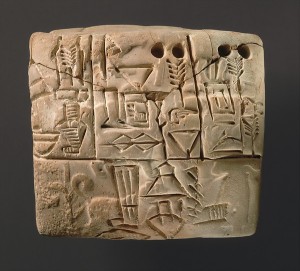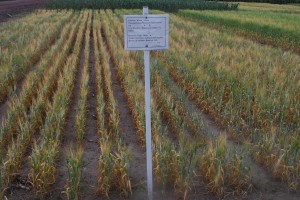The fluctuations, proliferations, and collapses in ancient civilizations have typically been viewed through cultural and political lenses. Yet, just as climate change today is a hot-button issue, ancient man also grappled with the environment. The extent to which local variations in climate impact the agricultural production of ancient civilizations has been little understood – until now. A team of scientists, including Yale C. J. MacCurdy Professor Emeritus of Anthropology Frank Hole, published a paper this past August on drought-stress patterns in ancient and modern agricultural systems of the Fertile Crescent. By measuring the ratio of carbon-13 to carbon-12 (δ13C) found in barley grains, the team was able to make conclusions about local climate change over time – providing a new angle with which to analyze history.
According to Hole, the seeds of the project were sown in the late 1980s, when he surveyed a climatically sensitive region of Syria. Hole inferred that population increases at certain points in history in the region stemmed from wetter climes Others, such as Yale Professor of Near Eastern Archaeology Harvey Weiss, linked the collapse of the Akkadian Empire to the 4200 BP (before present) aridification event, a period of intense drought.

There was one problem: conventional methods of drought analysis, such as analyzing lake cores, are only indirectly applicable when looking at inland, dry regions. Simone Riehl, lead author on the paper, decided to apply stable isotopic dating to barley grain in order to directly link archaeological sites with climate for the first time.
“The challenge was being able to go across [the Fertile Crescent region] and do this. It’s unprecedented,” Hole said.
Starting in 2000, the team collected data – barley grains – from about hundreds of agricultural fields in the Fertile Crescent region. Ultimately, the team also selected barley grain from 33 archaeological sites, spanning roughly 9500 years from the Aceramic Neolithic (10,000 BC) to the Iron Age (500 BC), to compare with the modern samples. Sites were selected to reflect different climatic environments: Coastal, Euphrates (further inland but with access to a river), Khabur, and inland sites without river access.
Hole said the team chose barley as the target grain because it is one of the most drought-tolerant crops and was economically significant – reasons that increased the likelihood of its detection at the target sites. Collected material underwent a process called flotation – pioneered by Hole for plant remains in the 1960s in his kitchen sink – in which water is used to isolate charred materials such as seeds, which can be run through several graduated sieves for collection.
The team determined the grains’ δ13C signal, an indicator of drought stress. In normal photosynthesis, fixation of carbon-13 relative to carbon-12 is quite low; however, under drought, C3 plants such as barley close their stomata to conserve water. This process increases the sequestration of carbon, which in turn raises the δ13C signal. This ratio was calibrated to reflect changes in the concentration of atmospheric carbon dioxide over time.
Through an analysis of the data, the team concluded drought stress was not a major factor in the lives of those in coastal regions. Even the most severe droughts, such as the 4200 BP event, caused only moderate stress in most coastal sites, in contrast with strong-to-moderate drought stress in inland regions.

One aspect of note is the high local variability of δ13C in inland regions when compared with coastal ones. The team concluded that this phenomenon is a result of differential irrigation patterns amongst various groups of people. Further, some crops in irrigated sites where irrigation might have been practiced, did not receive irrigation water.
The data was ultimately used to trace water availability over time, buttressing what was already known about climatic trends while providing new insights.
Conditions during the Middle Holocene (10,000-4000 BC) were more favorable than in any subsequent time. Ensuing periods of drought can be linked to the fluctuations in settlements, particularly those in arid regions. In around 2200 BC, a strong and persistent drought led to the ‘collapse’ of the Akkadian Empire. This was followed by further drought during the Middle Bronze Age and another dry spell during the Late Bronze Age.
Overall, the mean past values for the calibrated carbon-13 to carbon-12 ratio suggest lower drought stress than today, while the minima values (reflecting higher levels of drought stress) are more similar to modern climate values.
Hole said he hoped this data would help to create an “integrated history,” incorporating climatic variations and their impact on agriculture with known cultural and political factors—all of which play a role in shaping civilizations. He added, “We’re beginning to tie the way people lived on the land to historic events”.
